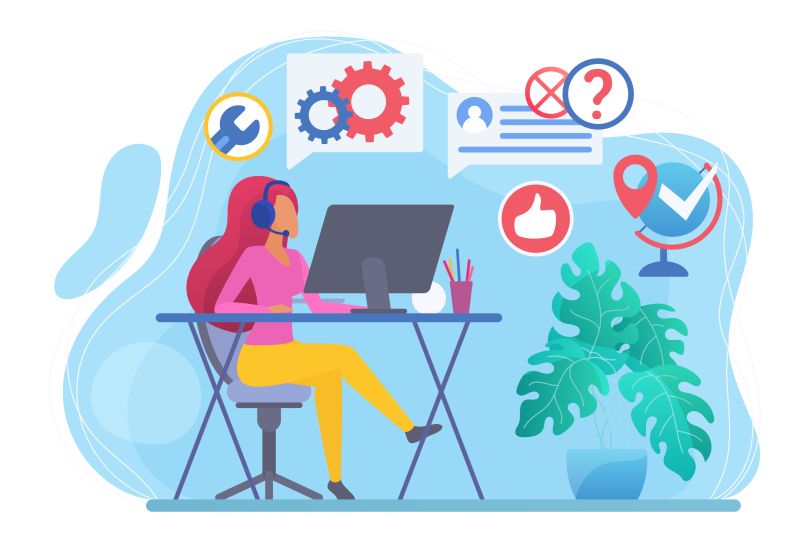In mid-March, sales leaders at Outreach gathered for a meeting to discuss what to do about a dip in their sales pipeline. At the time, companies had already shut down their offices, and the economic impact of COVID-19 was just starting to be felt. Empathy was the sales buzzword of the moment, but Outreach VP of Sales Mark Kosoglow knew empathy messaging alone wouldn’t sustain the business — or serve its prospects.
Instead, his team took a more direct approach, continuing outreach but adapting the messaging to one of three modes customers were finding themselves in: survival, overcome or capitalize.
Customers in survival mode had made budgetary cuts and weren’t looking to make any financial commitments. Customers at the “overcome” stage had experienced a financial setback but were looking to rebound. Those in “capitalize” mode were looking to pivot and take advantage of a new business opportunity.
Outreach designed tailored messaging for each customer.
The approach helped the company reach its second-best fiscal quarter ever. But, Kosoglow said, that second-best quarter is in itself a sign of the ongoing challenges.
“It sounds great, but at Outreach, we’ve always had our best fiscal quarter ever. That’s the mode we’re in,” said Kosoglow, who will be discussing his sales strategies at Sales Assembly’s Seattle Roadshow event during the week of June 22.
It can be tempting for sales teams to stop cold calling to give prospects space during a difficult time. After all, the last thing a prospect needs after a round of layoffs is a call from a salesperson pitching them on a product. But it’s also a mistake to assume that cold calling must come at the cost of empathy, said Dustin Deno, Showpad’s vice president of North American sales.
Instead, it requires adapting your strategy to the environment and the needs of each customer. For Deno and the sales enablement company Showpad, that meant using data and narrowing the scope of its addressable market. At the sales engagement software company Outreach, it meant calling the same customers, but changing the messaging.
We spoke with both sales leaders to learn how they adapted their sales outreach strategies to the current moment.
3 Tips For A Sales Outreach Strategy For an Uncertain Time
- Tailor the outreach messaging to the experience of the customer. Identifying the needs of the customer and what they’re going through can help sales teams generate new opportunities while remaining empathetic.
- Lean into sales data to maximize your impact. Showpad relied on its data to identify the kinds of customers still buying during the downturn and focused on selling to them.
- Stay versatile. It’s impossible to predict what will happen next, so it’s important to keep an eye on the data and adapt your strategy when the environment changes.

Fine-Tune the Message for Each Customer
After identifying the different customer stages, Kosoglow rolled out five training sessions to help reps sell to each customer and handle COVID-19-related rejections.
Customers in the “overcome” mode had stabilized the business after some economic struggles. To sell to them, Outreach uses a strategy Kosoglow calls “compassionate urgency.” During a call with this customer, the salesperson acknowledges the difficulty of the company’s situation — perhaps it had layoffs or made salary cuts — but nudges the customer to start thinking about the company’s future.
Those in the “capitalize” stage are interested in pivoting their businesses and exploring new opportunities. Conversations with these companies tend to focus on how Outreach could help them make that pivot.
“You should definitely have a time of introspection, but at the same time, if you don’t move on, you’ll move out.”
That left customers in “survival” mode, whose companies were actively cutting costs and have no room to add software. For them, reps focused on a more traditional empathy approach, providing free resources like white papers and webinars that could help them.
“There’s just a gentle reminder that, ‘Hey, don’t forget you need to do something,’” Kosoglow said. “You should definitely have a time of introspection, but at the same time, if you don’t move on, you’ll move out.”
It’s important for reps to understand where customers are coming from, but it’s also critical to create demand for your product. If a prospect at an event company claimed to be in survival mode, Kosoglow trained reps on how to change the conversation to focus on the next chapter for the business. If that’s virtual events, they could discuss how Outreach could help them handle those inbound leads, Kosoglow said.
“Our job as salespeople is to create demand, and part of that is to inspire people and give them ideas to help them move in a direction that’s good for them,” Kosoglow said.
The strategy has ultimately enabled Outreach to continue working with companies in a variety of industries and avoid bombarding those that are in high demand, such as medical supply companies or hand-sanitizer producers. In Kosoglow’s opinion, piling their efforts onto those companies would have only added to the noise and come off as tone-deaf.
It also helped Outreach close its largest deal of the quarter with a company in an industry that would have seemed to have been among the hardest hit — an onsite suit tailoring company.
“What would be a more difficult company to sell to?” Kosoglow said. “But they understood that this was their chance to move digital. They were investing, rather than protecting.”
Rely on Data to Identify Active Customers
When companies started to experience the economic impact of the coronavirus, Deno and the sales team at Showpad leaned into the data.
While the advice to lead with empathy was making its rounds on sales blogs, Deno narrowed the scope of the sales pipeline to focus only on customers who showed interest in Showpad. From there, his sales team took a more traditional sales approach, emphasizing value and ROI.
“If you were actively raising your hand during this time, it’s a real need,” Deno said. “So we were pretty direct about how we could help them during COVID times.”
Deno knows cold calling can be a discouraging experience, even during the best of times. Calling 100 customers and only hearing back from five just doesn’t get easier. But data and an accurate picture of the customers can help sales teams even the odds.
“If you were actively raising your hand during this time, it’s a real need.”
Showpad can learn a lot about how a customer navigates its website. If they read a blog post or research a tool, it can help fill in a rough sketch of what they’re interested in and how to sell to them. Understanding that data requires understanding the current customer base, Deno said.
Showpad took six months of sales cycles and identified the paths its most successful users took to find the product. That information helped them categorize current prospects based on how closely their experience matches those profiles.
Remaining relevant to the current economic situation required drilling deeper into the data to separate customers who remained active during the downturn from those who were struggling, Deno said. His team then created a list of seven industries that reps should avoid spending time selling to.
“Telling the sales team what not to focus on is just as important,” Deno said.
While the data gave his sales team guidance on whom to call, it’s also important to adapt to the conversations on the calls. As reps learned that customers were interested in remote sales coaching, they recorded that information so that the marketing team could use it to shape its content.
While Showpad’s sales team has been making fewer calls, it’s converting those calls into sales opportunities at a higher rate, Deno said. Team members are also spending more time on sales calls, as a whole, which Deno attributes to the sales team’s data-driven approach.
“Access to people has gotten easier,” Deno said. “But that’s a function of who you’re calling, how you’re calling and when. We’re calling people who have raised their hand, shown intent and downloaded something, so it’s top of mind for them.”

Stay Agile by Keeping an Eye on Your Sales Data
Deno is the first to admit he doesn’t know what comes next as cities and businesses start to reopen. It’s an unprecedented situation that will require another adjustment.
The time for empathy above all else, however, might be over. Companies that are still struggling to stay afloat three months after COVID-19 hit aren’t likely to be customers any time soon, Kosoglow said. At Outreach, the sales team has returned to its usual messaging and outreach strategy. After a reduction in pipeline creation in the last quarter, it’s seeing signs that things are returning back to normal.
“We had to back off of that for a period and be more empathetic, but once we saw that that wasn’t working anymore, we went back to our normal messaging.”
“We’re very forward about what our value proposition is and having a strong call-to-action,” Kosoglow said. “We had to back off of that for a period and be more empathetic, but once we saw that that wasn’t working anymore, we went back to our normal messaging. We’ve been getting normal pipeline generation for the last couple of weeks.”
Deno’s advice for sales leaders is to get their data in order so that they can be prepared to identify the next trend when it happens. That means making sure there’s a system in place to keep CRM data up-to-date, reviewing the importance of each KPI and understanding how each team influences the sales pipeline and conversion rates.
And whatever happens, don’t stop reaching out to customers.
“It’s not about slowing up or letting off the gas,” Deno said. “It’s about getting smarter. That’s the general theme when I think out about our sales outreach. We’re just calling the right people.”




